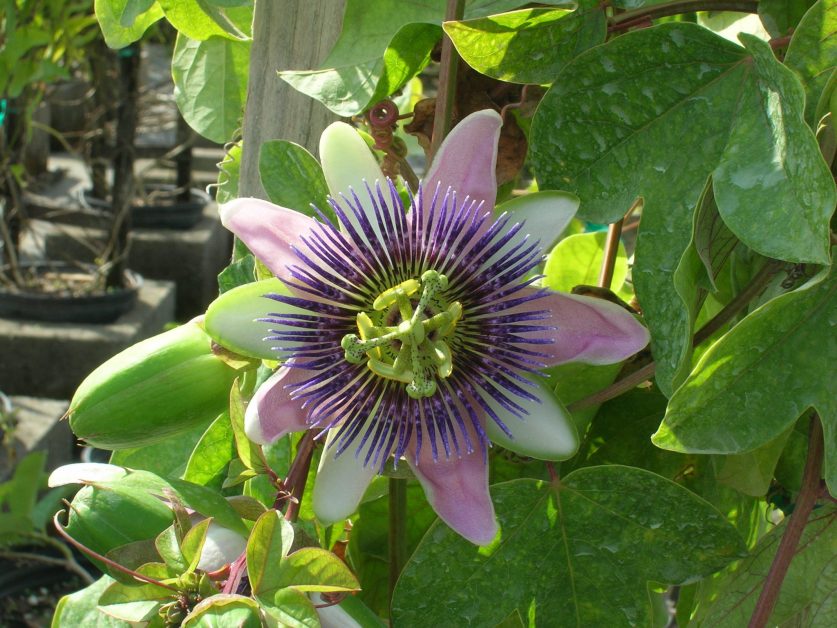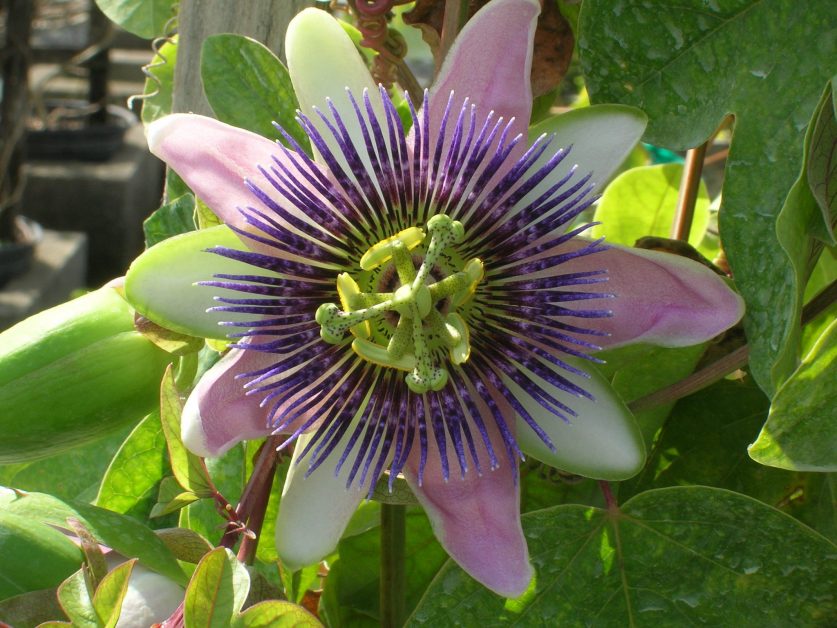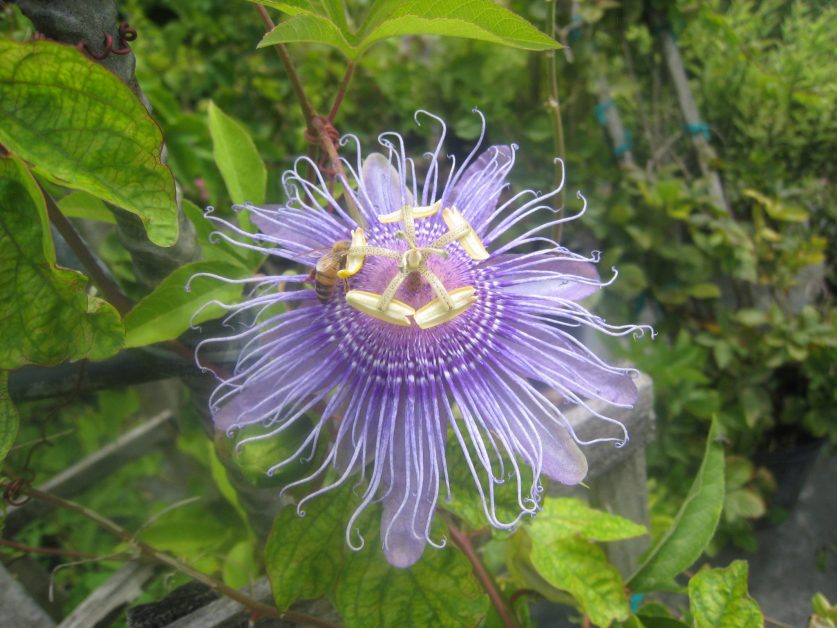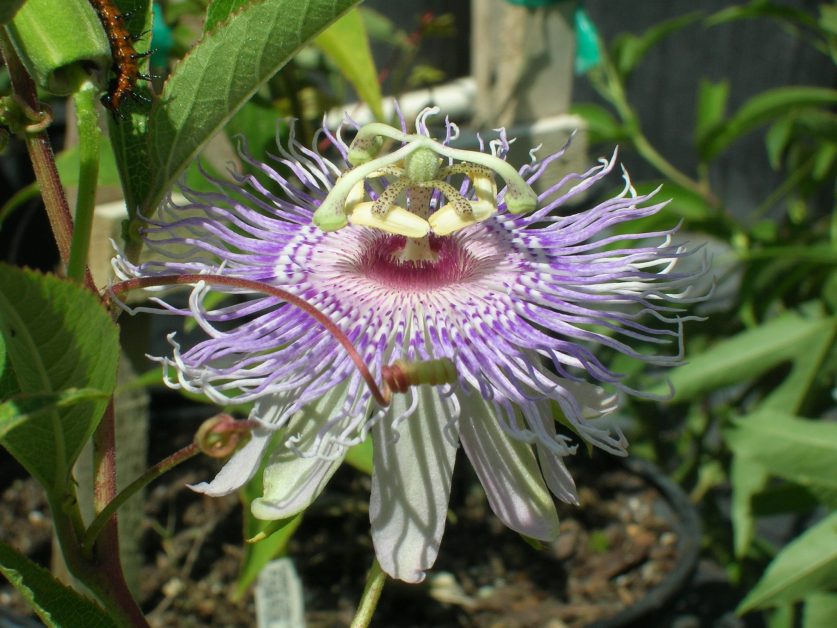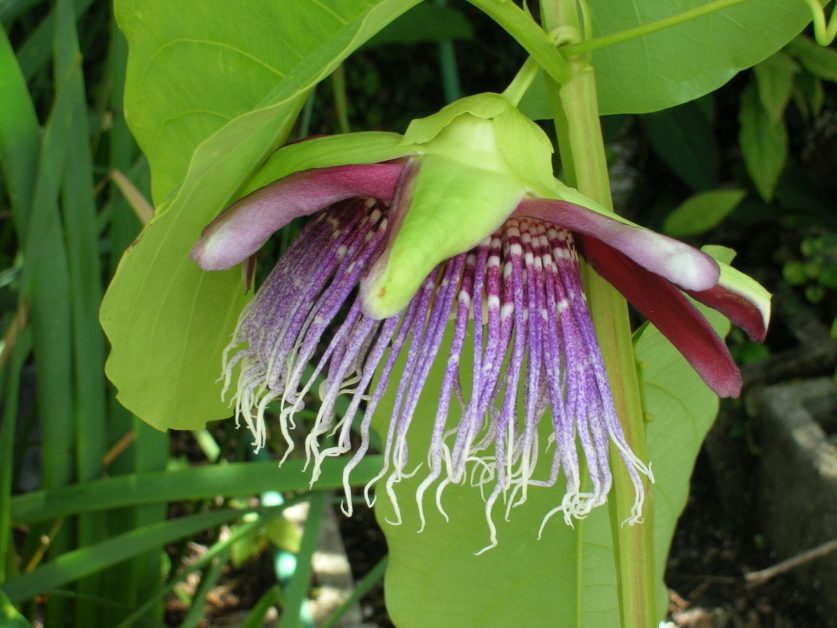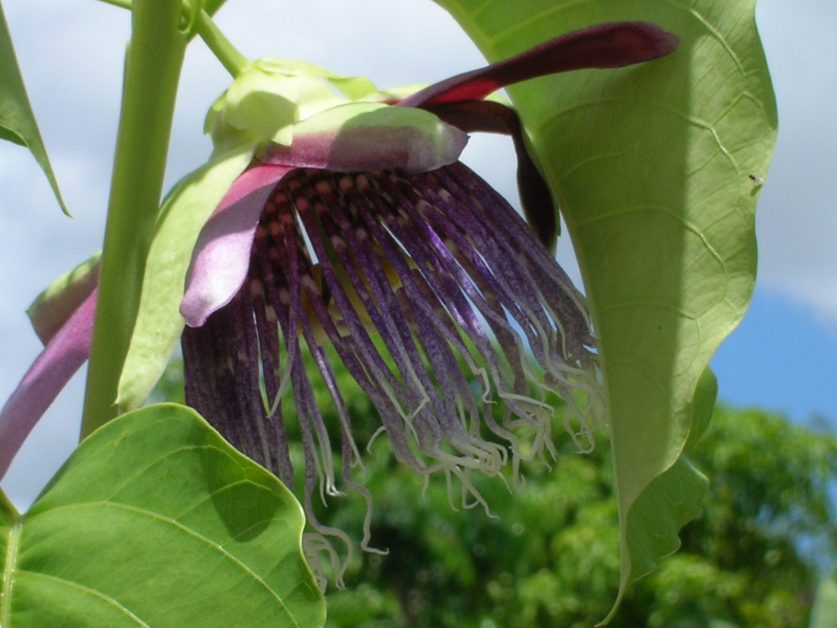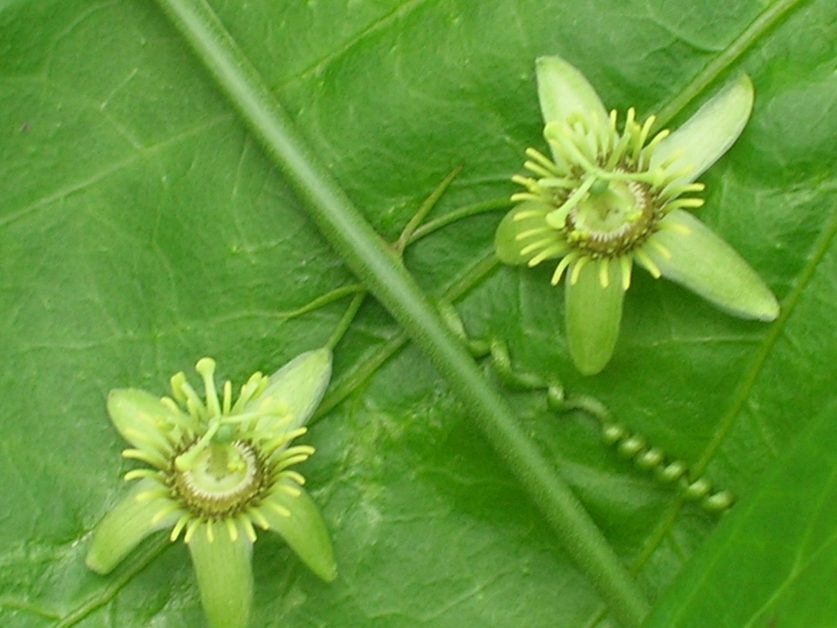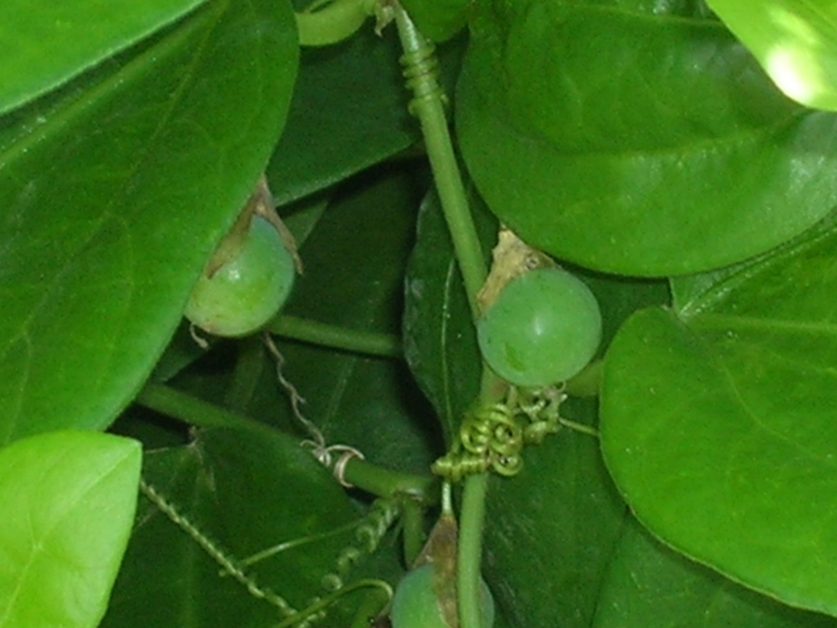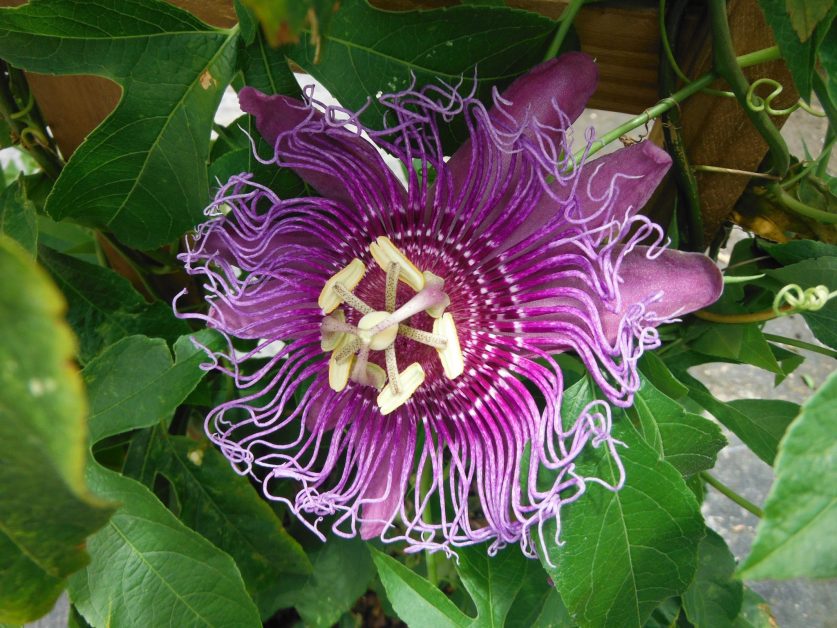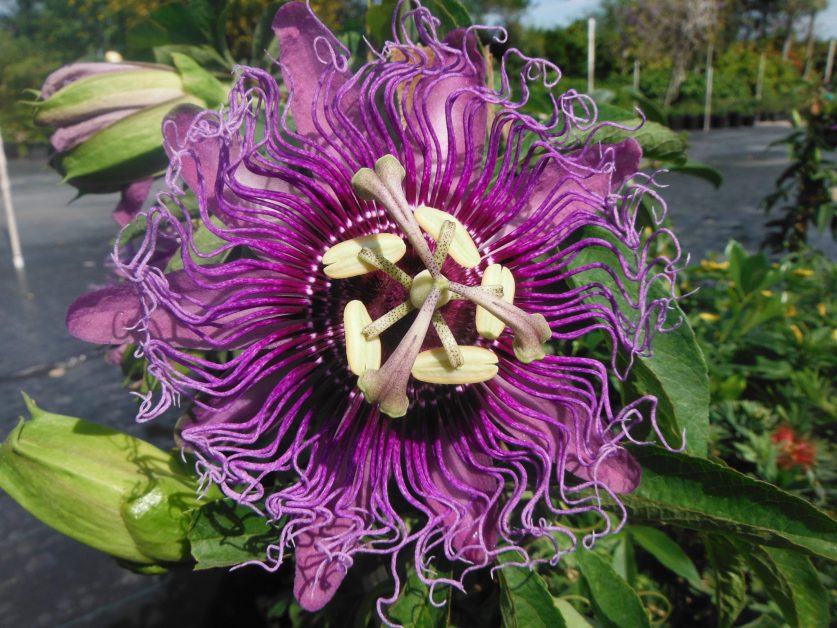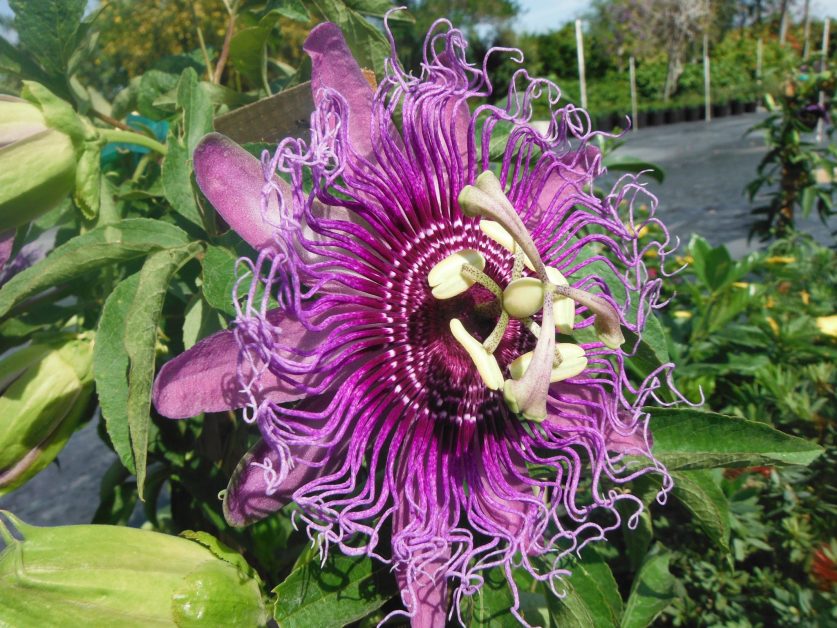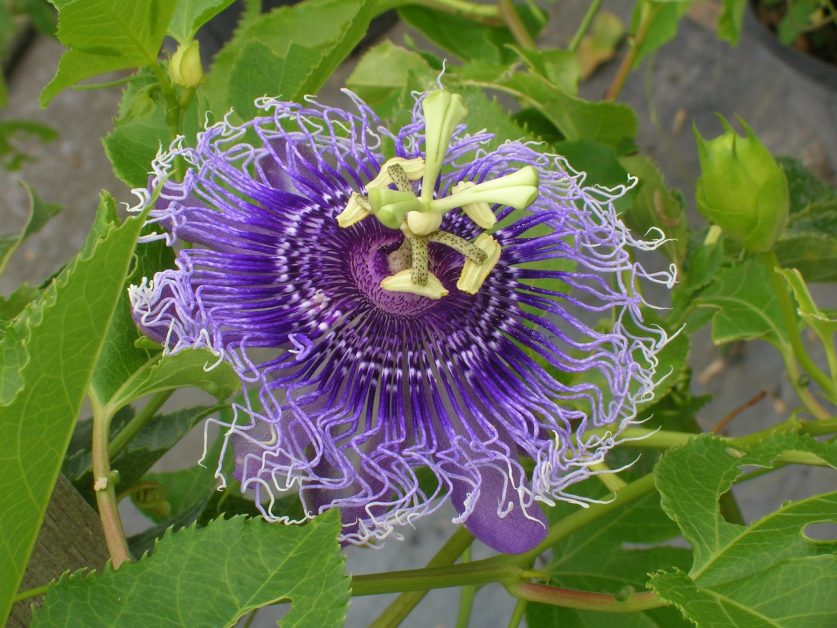Looking for Passion?, Part II
This week we conclude with the Passion Flower species which Richard Lyons’ Nursery recommends for our area. Many of these plants are available at the nursery.
Passiflora incarnata (Maypop Passion Vine) is among the hardiest of the Passion Vines. The Cherokee word for P. incarnata is ocoee, a name also given to the Ocoee River of the Appalachians. The Maypop Passion Vine is also the state wildflower of Tennessee. The striking 2-3 in. wide flowers feature bluish-white tepals, and the corona comprises white and purple filaments. The species is both a bee attractant and a butterfly larval host. The name Maypop refers to the fleshy fruit that matures to an orange hue. It should be planted in sunny positions. This vine can reach 12 ft. long, and can trail as well as climb.
Passiflora quadrangularis (Giant Granadilla) is a fast-growing vine that may reach 50 ft. or more in length. Its fragrant flowers are about 5-in. wide and produce hues of green or reddish-green on the outside of the sepals and white, pink, or purple inside. The Giant Granadilla is a New World native, though exactly where it originated is no longer known. It produces the largest fruit of any of the Passiflora species, an aromatic oblong-ovoid structure 8-12 in. long. Fruiting is very sporadic in southern Florida without hand-pollination.
Passiflora suberosa (Corky-stem Passion Vine) is a wide-ranging species that occurs natively from Florida and southern Texas into South America and the Caribbean, but it has become naturalized as far away as Australia. It is a larval host – perhaps the best larval host – to a number of butterfly species. While it produces purple-black edible fruit, the quality is nothing special. The stems of P. suberosa, corky-textured with age, are just a few feet long, so that this species functions as both a vine and an informal ground cover. It grows in full sun to light shade and does not require supplemental watering once established. Its small greenish-yellowish flowers appear year-round.
Passiflora alatocaerulea (Three-lobed Passion Vine) produces fragrant, bowl-shaped white sepals with lavender to purple filaments. This hybrid between P. alata and P. caerulea reaches about 20 ft. in length and is a bird and butterfly attractant, as well as a larval host. In order to keep the vine in best health, it is advisable to prune out interior growth from time to time. It performs well as a trellis plant. P. alatocaerulea tolerates alkaline soils and prefers sunny to partially-shaded exposures. Keep the soil evenly moist, but not saturated.
- Passiflora alatocaerulea (Three Lobed Passion Vine)
- Passiflora alatocaerulea (Three Lobed Passion Vine)
- Passiflora incarnata (Maypop)
- Passiflora incarnata (Maypop)
- Passiflora quadrangularis (Giant Granadilla)
- Passiflora quadrangularis (Giant Granadilla)
- Passiflora suberosa (Corky Stem Passiflora Fruit)
- Passiflora suberosa (Corky Stem Passiflora Fruit)
- Passiflora suberosa (Corky Stem Passiflora Fruit)
- Passiflora incarnata x P. cincinnata ‘Incense’ (Incense Passion Vine)
- Passiflora incarnata x P. cincinnata ‘Incense’ (Incense Passion Vine)
- Passiflora incarnata x P. cincinnata ‘Incense’ (Incense Passion Vine)
- Passiflora incarnata x P. edulis) x (P. incarnata x P. cincinnata) ‘Blue Eyed Susan Passion Vine
